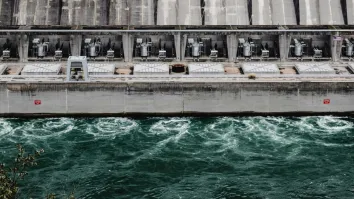In search of better power regulation for Hong Kong
By Peter Hopper & Alice YungPotential improvements to Hong Kong's present electricity regulation scheme can be made, but they may result in unintended outcomes.
In Hong Kong, the electricity suppliers are regulated by the government through Scheme of Control Agreements ("SCAs"). It has provided a reliable framework for monitoring the power companies' operations and tariffs to protect the interests of consumers and the long-term stability of the city's electricity market.
Under the SCAs, the power companies have agreed to provide sufficient levels of investment in plant, equipment, and maintenance to meet current and future electricity demand. At the same time they are entitled to earn a permitted rate of return on their average net fixed assets ("ANFA").
The terms of the existing SCAs are nearing expiration. The Government has initiated a public review concerning new terms for the SCAs for the next regulatory period. Earlier this year, a public consultation paper was published on the development of the local electricity market.
One of the proposals suggested a reduction of the permitted rate of return from the current 9.99% (11% for renewable energy) to a lower range of 6% to 8%.
More importantly, the public consultation has generated broad debate on ideas such as liberalising the market by introducing more competition. How current and new electricity schemes could improve or hinder power production will play a crucial role in the city's economic stability and development.
Moving forward from the debate
Shortcomings of the current SCAs are being argued in the media and public forums. Over the decades, they have met Hong Kong's energy policy objectives. But, critics now claim that their terms and conditions have created outcomes that are biased towards the power companies.
They have become too expensive for Hong Kong. The SCAs should have been replaced by a significantly better balanced legal and technical framework.
The current SCAs, with 10-year terms, will expire in 2018. Certain terms were updated since the last SCAs that ran for 15 years until 2008.
Major changes and suggestions included: shortening of SCAs' duration by 5 years to 10 years; adjustment of the annual permitted rate of return to 9.99% from 13.5% to 15% previously; and lowering the cap on the Tariff Stabilisation Fund balance to 5% of annual electricity sales from 12%.
Pros and cons of the current SCAs
In recent years, critics have pointed out that the rates of return for power companies are too high considering the city's low interest rate environment. Today's return levels might have been justifiable 40 to 50 years ago when capital was scarce relative to the amount needed to build electricity infrastructure.
Power companies should be expected to make returns that are commensurate with the present and future business risks of the industry.
The current SCAs appear to encourage and reward over-investment because the permitted return for the power companies are directly linked to their asset base. By adding new infrastructure investment, they can inflate their asset base and be entitled to higher returns.
There is an arrangement in place where 50% of the net asset value related to new generating facilities found to be excessive upon commissioning would be excluded from the permitted return calculation. This is supposed to avoid any excessive generating capacity resulting from an over-estimation of demand.
However, consumers are still required to pay other related costs through increased tariffs. The existing mechanism seems to have created an outcome where there is an unequal sharing of investment risk between the power companies and their consumers.
The current SCA framework has also sparked controversy for a review of the introduction of market competition. Critics have pointed out that the current regime leads to excessive electricity costs, harmful emissions, absence of innovation and inefficiencies due to the duopolistic nature of the market.
While the SCAs have their shortcomings, it also features benefits. They provide a clearly defined regulatory system for a fixed period for the entire industry.
The power industry requires large and often up-front investments. So the SCAs provide a stable and consistent regulatory framework over a period that allows investors to make investment decisions on a well-informed basis.
Minimising regulatory uncertainty is an important component for committing timely and sufficient investment capital. SCAs provide the right incentives to make investments in infrastructure and maintenance to meet continued growth in electricity demand and maintain high levels of supply reliability.
The SCAs' clear policy and investment guidance provide more certainty and predictability for the revenue and earnings of the power companies. This enhances the operator's ability to negotiate for better financing terms thus lowering their cost of capital.
In addition, the SCAs have mechanisms, such as the fuel clause account, tariff stabilisation fund, that serve to stabilise tariff fluctuations.
Introducing competition to the market
Market competition is widely believed to offer more choices and advantages for consumers. And wider choices can push down costs and increase efficiency gains through more competition and innovation, all of which might reduce tariffs.
However, market liberalisation has actually produced mixed outcomes in other countries such as the UK. Liberalisation of the UK electricity industry began in the 1980s by introducing competition in the wholesale and retail sectors.
According to a study done on assessing the state of competition in the energy markets in the UK, competition does not appear to be effectively serving the interests of households and small firms.
The UK electricity industry faces high levels of market concentration, high barriers of expansion, and a relatively homogeneous product. Similar cost structures and company operations actually facilitate tacit coordination.
This implies that power companies are able to anticipate each other's future actions or price announcements without having to communicate directly. This phenomenon defeats the purpose of introducing additional competition. Ironically, the result is that competition actually becomes less marginally effective.
High barriers to entry and expansion also weaken the pricing power and influence from new suppliers. These barriers emerge from the lack of wholesale liquidity as well as the complexity and cost obligations of the industry, which are more burdensome for smaller and non-integrated suppliers.
Worst of all, complex tariff structures and discount arrangements, the lack of clarity of information given to customers, and the distrust of energy suppliers collectively produced poor results. A non-transparent and non-competitive market reduced customer engagement, leading to a failure or inability to exert pressure on suppliers because of weak customer influence.
Delivering successful liberalisation
Market liberalisation can only be effectively developed and implemented if it is treated as an ongoing process rather than a single event. The success of liberalisation does not depend on finding the perfect model from the beginning.
Reform is progressive and should be managed rather than imposed. Regulators and the general public should expect changes and modifications to the original plan.
As a power market liberalises, active and committed government involvement is required despite roles that might fundamentally change over time. The government will need to establish and enforce a framework to ensure the development of effective competition, risk management, market transparency, and consumer protection laws.
Delivering the measurable benefits of improved power regulation to consumers involves removing barriers and empowering them. This requires a transparent and easy to understand tariff and product structure that allows and encourages consumers to actively participate so they understand the true costs of choosing and switching electricity suppliers.




















 Advertise
Advertise






